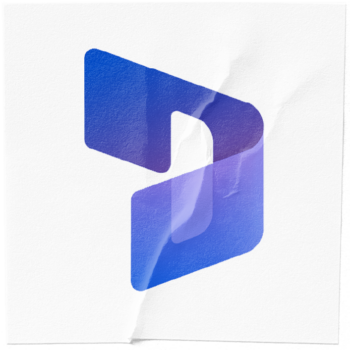Dynamics 365 vs Salesforce_
Discover why Dynamics 365 is the CRM of choice when it comes to AI, price, flexibility and performance.

Dynamics 365 vs Salesforce: A choice of substance or style_
In the bid to find your perfect CRM, you’ll come across a lot of names. Microsoft Dynamics 365 and Salesforce are two of the biggest.
While Salesforce has perfected the art of flashy pitches, adverts with A-listers and spending a lot of time talking about why they’re better than Microsoft, the substance doesn’t always match the style. Customer feedback often highlights that they overpromise and underdeliver.
Dynamics 365 is a CRM you can trust. Honed by decades of tech research and experience from Microsoft, it’s tailored to the needs of your business while addressing the changing trends and priorities the wider world brings. Most crucially, it’s connected to the tools you already know and use throughout your teams.
Today, Dynamics 365 proudly has:
- Leader status in Gartner’s Magic Quadrant™ for Cloud ERP for Service-Centric and Product-Centric Enterprises
- A global reach, used by businesses in over 140 countries
- A 3 user rating on Forbes – 0.1 point higher than Salesforce

What’s in 0.1 of a point?
Yep, you read that right – we’re boasting about being 0.1 of a point higher than Salesforce. While it might seem negligible, we think that 0.1 counts for a lot.
In the world of business technology, every detail counts. When it comes to choosing the right CRM platform, even the smallest differences can have a significant impact on your business’s success.
That 0.1 of a point actually works out as 2.3% difference. That’s your CRM system being 2.3% slower. It’s tasks taking 2.3% longer to complete. Its users being 2.3% less satisfied. It’s the difference between good and great, between meeting expectations and exceeding them.
Dynamics 365’s higher rating signifies a deeper level of trust and satisfaction among its users, which can translate into better outcomes for your business.
And when you could have something better, why would you settle for marginally less?

Salesforce vs Microsoft: the key differences_
So, let’s get to it: why choose Dynamics 365 over Salesforce? For lots of reasons, it turns out.
Contained to sales and marketing
There’s no denying that Salesforce is a strong CRM for sales and marketing teams. But the impact stays just there: in sales and marketing. This creates a silo, with no insight from the rest of the business.
Bringing the whole business together
With modules covering everything from customer service to finance and operations, Dynamics 365 brings departments together. With full context across teams, you can ensure smarter decisions and better experiences.
Rigidity
User feedback suggests that, while Salesforce does offer customisation options, these can be complex to implement. Tailoring the platform becomes a burden, rather than a quickly evolving process.
Flexibility
Advanced customisation options make Dynamics 365 the CRM system that can be built for your business. Using the Power Platform, even the customisations can be customised.
Clunky workflows
Salesforce reviews cite workflows in the platform as being ‘clunky’, particularly when it comes to automation. This is because Salesforce rely on third-party integrations – which often become harder to implement and manage long-term, leading to fragmented systems.
Advanced automation
Dynamics 365 is built upon seamless automated workflows, particularly between Microsoft tools, for continual context and minimal intervention. Plus, with Power Automate and Copilot Agents, you can easily add even more automation.
Rapidly scaling pricing
While Salesforce prices start from £20 per month, they go up to a huge £400. As you find your usage needs increasing, you’ll rapidly find yourself in a higher price band, which eats into your profit.
Pricing models that fit you
Dynamics 365 offers only a handful of pricing options, which prevents costs from mounting unexpectedly. You also only pay for the modules you use, meaning you get value from every penny spent and no waste.
Cloud-based only
Salesforce is only available as a cloud deployment. While this will suit most businesses, it doesn’t help those who require or prefer on-premises implementation.
Choose your preferred deployment
With Dynamics 365, you can choose between cloud or on-premises deployment. This is ideal if you have specific compliance or data requirements.
Project delays
Salesforce projects are prone to delay, due to resource gaps or issues with implementation. This can lead to timelines being pushed back, and preventing you from getting going with your new CRM.
Delivered on time, by experts
Microsoft benefit from a comprehensive network on software engineers, supported by partners like Infinity Group. This ensures you have the skilled resource required to deliver the project on time and on brief.
Just talking the talk
Salesforce is famed for getting decision-makers hooked with flashy sales pitches and product demos. But they’re not so good at the technical bit, including how the CRM is going to practically fit with your existing IT.
Get key stakeholders (including IT) on side
Dynamics 365 approaches digital transformation with an engineering mindset. Our consultants ensure cohesion across core stakeholders. Most crucially, we can discuss the technical implementation to ensure it works with your IT infrastructure.
Features behind paywalls
Many of Salesforce’s most intriguing features (including AI) require upgraded licensing or additional costs to use, leading to rising fees that you didn’t realise. Even security features are paywalled.
Open access to innovation and security
Microsoft offer open access to their best features and advanced security measures, without additional costs. You’ll even benefit from twice-yearly product updates at no extra charge.
LinkedIn frustration
Many users have reported issues with Salesforce’s LinkedIn Sales Navigator integration, preventing them from getting a smooth user experience.
Smooth integration with Sales Navigator
Fortunately, Dynamics 365’s integration with LinkedIn Sales Navigator is much smoother, enabling sellers to build relationships with leads and keep it up to date in your CRM.
Limited support
While Salesforce offer support to get used to the system, this is no match for the countless documents delivered by Microsoft.
Endless learning resources
Microsoft have libraries of guides, videos and content to help you get more out of your CRM system and discover brand new uses.
AI locked behind licenses
Salesforce offer multiple tiers of additional licensing to use their AI, raising your cost of ownership. Plus, the AI powers are constrained to Salesforce only, and none of the other tools you use.
AI, without complicated workflows and pricing
Dynamics 365 Copilot can drive AI power across your platform, seamlessly integrating with your office applications while only having to buy a bolt-on license to get the AI you need.
What about AI?
AI is still a buzz topic when it comes to business technology. To retain your competitive edge and drive productivity, you need AI in-built to your CRM.
Both Salesforce and Dynamics 365 have AI assistance.
Salesforce’s AI, Einstein, is embedded only in the Salesforce platform. It requires additional data clouds, which prevents it being utilised across applications.
But Copilot works across the Microsoft solutions you already use, allowing you to bring context and data from your CRM when you’re working in other platforms. Microsoft even had to make Copilot integration with Salesforce, so users could finally get their Salesforce data into the tools they use every day.
By being able to use AI across more of your tech stack, you can ensure greater visibility across data, driving automation and fuelling better decision-making.

Should you consider moving CRM?
Moving your CRM system may seem like a burden. However, if yours isn’t serving you, moving now is crucial – whether that’s from Salesforce or any other system.
Many CRM users report struggles with:
- High total cost of ownership
- Expensive renewals
- Poor user experiences
- Project delays
- Hidden costs (including from third-party connectors)
- Lack of integrated AI
- Data siloes
By investing in the switch to Dynamics 365, you can prevent spiralling costs, say goodbye to product gaps and choose a better experience from your business. Plus, with responsible timelines, migration tools and consistent support, we can make the process as easy as possible.

The bottom line
Despite both being well-regarded in the industry and sharing similar features, there are stark differences between Salesforce and Dynamics 365.
While Salesforce is a comprehensive CRM, there are limitations that prevent it being ideal for everyone. With rapidly increasing prices, clunky customisations and inability to integrate with your entire tech stack, many growing businesses may find themselves frustrated.
Dynamics 365 is better suit for larger, more established businesses who want a CRM built on automation, AI and seamless integration. It’s especially beneficial for those already using Microsoft technology across their business, and wanting a system that effortlessly slots in.

Our Business Value Assessment can uncover how Dynamics 365 can benefit your business, taking into account your specific needs and existing data and processes. And, if you’re already with Salesforce but looking to make a change, our Salesforce to Dynamics 365 will guide you through the process and make the transition simple.
FAQs_
What is Dynamics 365?
Dynamics 365 is a comprehensive suite of business applications developed by Microsoft, designed to streamline and enhance various business processes. It combines Customer Relationship Management (CRM) and Enterprise Resource Planning (ERP) capabilities into a single, integrated platform.
This allows businesses to manage their sales, customer service, marketing, finance, operations and more, all within one cohesive system. Dynamics 365 leverages advanced technologies like artificial intelligence (AI) and machine learning to provide actionable insights, automate routine tasks, and improve decision-making.
How much does Dynamics 365 cost vs Salesforce?
Dynamics 365 full licences start at £53.40. Additional apps (attach licences) then start from £16.40. There are education, government and charity discounts for licences, and different apps have different pricing. Some are priced per user per month, but others are priced per tenant per month. Full information about licensing can be found here.
Salesforce pricing varies depending on what products you buy. Prices start at a reasonable £20 per user, per month, but this is for a small business starter suite with very limited features. For larger businesses looking to implement the Sales Cloud product, prices start at £132 per user, per month. If you want AI included, this rises to a hefty £400 per user, per month.
What are the reporting capabilities in Dynamics 365 vs Salesforce?
Dynamics 365 is often considered superior in analytics and reporting, leveraging Microsoft’s Power BI for advanced data insights. Power BI integration allows users to create detailed reports and interactive dashboards, providing a comprehensive view of business performance. This powerful analytics capability helps businesses make data-driven decisions and identify opportunities for growth and improvement.
Salesforce also offers robust analytics and reporting features but may require additional tools or integrations to achieve the same level of detail as Dynamics 365. Salesforce’s built-in reporting tools provide valuable insights into sales performance, customer behaviour and other key metrics. However, businesses looking for more advanced analytics capabilities may need to invest in additional solutions, such as Salesforce Einstein Analytics, to fully leverage the platform’s potential.
What are the benefits of Dynamics 365?
Dynamics 365 as a CRM offers a multitude of benefits that can significantly enhance business operations. One of its primary advantages is its seamless integration with other Microsoft products like Office 365, Teams, and Azure. This integration ensures a unified and familiar user experience, which can boost productivity and collaboration across teams. Additionally, Dynamics 365 leverages advanced AI and machine learning capabilities to provide actionable insights, automate routine tasks, and personalize customer interactions. These features help businesses make data-driven decisions, improve customer satisfaction, and drive sales growth.
Another key benefit of Dynamics 365 is its flexibility and scalability. The platform offers a modular approach, allowing businesses to start with specific applications and expand as their needs evolve. This means companies can tailor the CRM to their unique requirements without overhauling their entire system. Furthermore, Dynamics 365 provides robust customization options and a vast ecosystem of third-party applications, enabling businesses to create a solution that fits their specific workflows and processes. With its global reach and strong support network, Dynamics 365 is well-suited for businesses of all sizes looking to achieve their strategic goals and drive digital transformation.
Can Microsoft tools and Salesforce work together?
Yes, Salesforce can integrate with core Microsoft tools like Outlook, Teams and Power BI. However, these integrations aren’t as seamless as they would be with Dynamics 365, which can impact automation and ease of use.
And while the Microsoft ecosystem allows you to share context and keep data up to date between tools, you may more manual intervention and movement between tools is required when integrating with Salesforce.
Which platform offers better customer support?
Dynamics 365 is often praised for its customer support, especially for enterprise-level clients. Microsoft provides a range of support options, including online resources, community forums and dedicated support plans for businesses with more complex needs. The availability of personalised support and consulting services can be particularly beneficial for large organizations looking to maximize their investment in Dynamics 365.
Salesforce also provides customer support, with a variety of resources available to help users get the most out of the platform. These include online documentation, training programs, and a vibrant user community. While Salesforce’s support is highly regarded, Dynamics 365 offers more tailored support options for enterprise clients, particularly those with extensive Microsoft product deployments.
We would love
to hear from you_
Let’s discuss your CRM needs and how Dynamics 365 can propel your business forward.